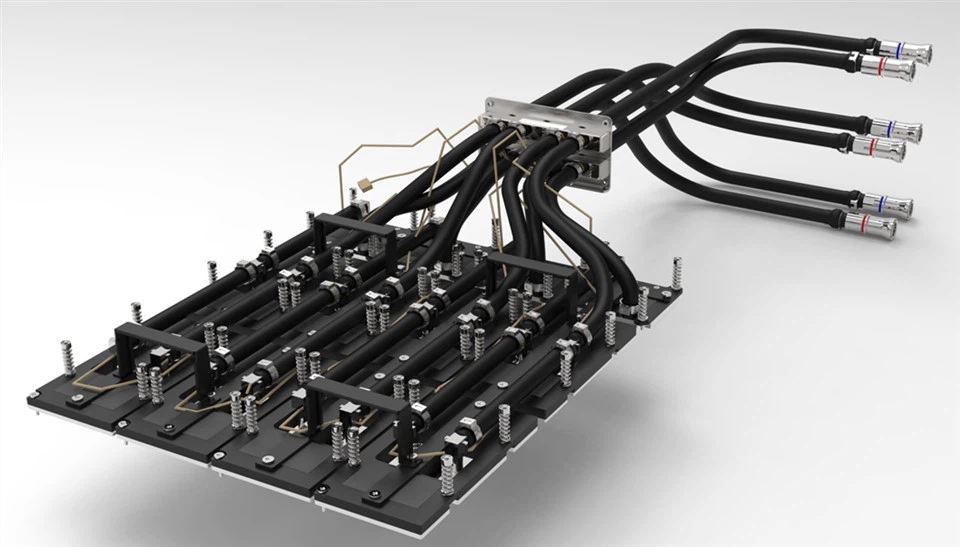Liquid Cooling Solution For NVIDIA H100
The NVIDIA H100, built on the Hopper architecture, is a powerhouse designed for AI, deep learning, and scientific computing. However, with great power comes great heat, and managing thermal performance is critical to maximizing the potential of these GPUs. This is why liquid cooling solutions are designed to solve this thermal issues.
Product Introduction
As the demand for high-performance computing (HPC) continues to grow, data centers and enterprises are increasingly turning to advanced GPUs like the NVIDIA H100 to power their most demanding workloads. The NVIDIA H100, built on the Hopper architecture, is a powerhouse designed for AI, deep learning, and scientific computing. However, with great power comes great heat, and managing thermal performance is critical to maximizing the potential of these GPUs. This is where liquid cooling solutions come into play. Here are the key benefits of liquid cooling for the NVIDIA H100 and why it is becoming an essential component in modern data centers.
1. ExcellentThermal Performance
The NVIDIA H100 is a high-performance GPU that generates significant heat during operation. Traditional air cooling methods often struggle to keep up with the thermal demands of such powerful hardware. Liquid cooling, on the other hand, offers superior heat dissipation capabilities. By circulating coolant directly to the heat source, liquid cooling systems can efficiently remove heat, ensuring the GPU operates within optimal temperature ranges. This results in improved performance and stability, even under heavy workloads.

2. Increased Energy Efficiency
Liquid cooling systems are more energy-efficient compared to air cooling. Air cooling relies on fans that consume substantial power, especially when running at high speeds to manage heat. Liquid cooling reduces the need for high-speed fans, lowering overall power consumption. This not only reduces operational costs but also contributes to a smaller carbon footprint, aligning with sustainability goals for modern data centers.
3. Higher Density and Space Optimization
Data centers are constantly looking for ways to maximize space utilization. Liquid cooling allows for higher-density configurations by enabling tighter packing of GPUs like the NVIDIA H100. Since liquid cooling systems are more effective at heat removal, they reduce the need for large air gaps between components. This means more GPUs can be installed in the same rack space, increasing computational power without expanding the physical footprint of the data center.
4. Improved Performance and Longevity
Heat is one of the primary factors that can degrade the performance and lifespan of electronic components. By maintaining lower operating temperatures, liquid cooling helps extend the lifespan of the NVIDIA H100 GPUs. Cooler temperatures also prevent thermal throttling, ensuring the GPU consistently delivers peak performance. This is particularly important for AI training, scientific simulations, and other compute-intensive tasks where even a slight drop in performance can have significant impacts.

5. Reduced Noise Levels
Air cooling systems, especially those with high-speed fans, can generate considerable noise, which can be disruptive in certain environments. Liquid cooling systems are significantly quieter, as they rely on pumps and radiators that operate at lower noise levels. This makes liquid cooling an ideal solution for environments where noise reduction is a priority, such as office-based data centers or research facilities.
6. Scalability for Future-Proofing
As GPU technology continues to advance, future iterations are likely to generate even more heat. Liquid cooling systems are highly scalable and can be adapted to meet the cooling demands of next-generation GPUs. By investing in liquid cooling for NVIDIA H100 GPUs today, data centers can future-proof their infrastructure, ensuring compatibility with upcoming hardware advancements.
7. Support for High-Performance Workloads
The NVIDIA H100 is designed for some of the most demanding workloads, including AI model training, deep learning, and high-performance computing. Liquid cooling ensures that the GPU can sustain these workloads without overheating, enabling faster processing times and more reliable results. This is particularly critical for industries like healthcare, finance, and autonomous vehicles, where computational accuracy and speed are paramount.

8. Environmental Benefits
Liquid cooling systems contribute to a greener data center ecosystem. By reducing energy consumption and improving efficiency, they help lower the overall environmental impact of data center operations. Additionally, some liquid cooling solutions use eco-friendly coolants, further enhancing their sustainability credentials.
Liquid cooling solutions are revolutionizing the way data centers manage the thermal demands of high-performance GPUs like the NVIDIA H100. From enhanced thermal efficiency and energy savings to improved performance and scalability, the benefits of liquid cooling are clear. As the demand for AI and HPC continues to grow, adopting liquid cooling technology will be essential for organizations looking to maximize the potential of their NVIDIA H100 GPUs while maintaining a sustainable and efficient infrastructure. By integrating liquid cooling into their systems, data centers can unlock the full power of the NVIDIA H100, ensuring they remain at the forefront of innovation in an increasingly competitive landscape.
Hot Tags: liquid cooling solution for nvidia h100, China, manufacturers, customized, wholesale, buy, bulk, quotation, low price, in stock, free sample, made in China, Stamping Sheet Metal Parts, Stamping Fin Assembly with Fan, Thermal BackPlate, Stamping Zipper Fin Sink, Liquild Cold Plate with Copper Tube, Stamping Part
You Might Also Like
Send Inquiry











